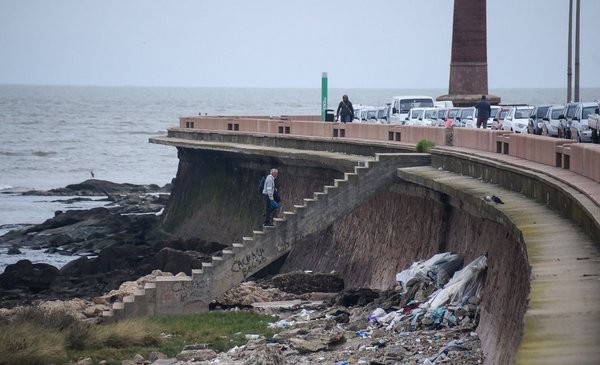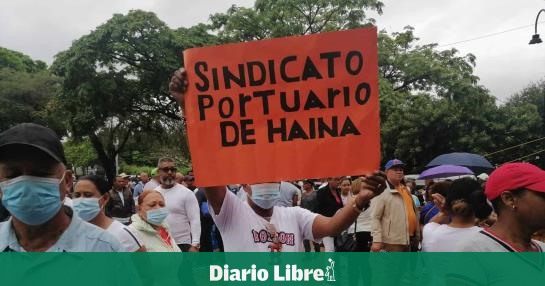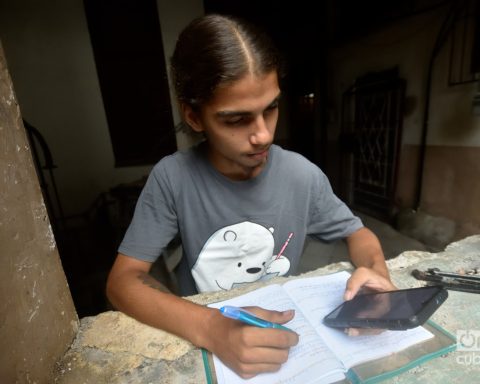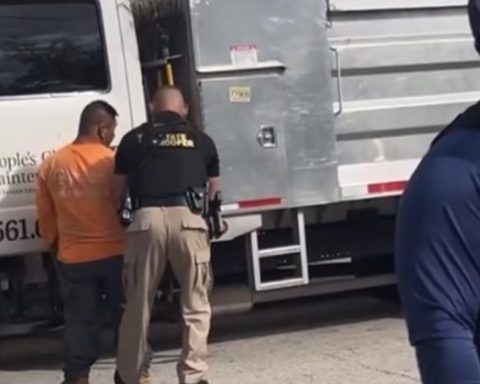First, the water brought with it a torso. The following week, a fisherman found a head. The case caught the attention of public opinion and the media, which practically televised the appearance of the arm and leg that later appeared on the Rambla in Montevideo.
In this case, a person was convicted of having covered up the crime and the Homicide prosecutor of 3er Turno, Adriana Edelman, is still working to find those responsible, but from the Prosecutor’s Office they confirmed that it is an event linked to drug trafficking. The condemned man was seen on video surveillance cameras together with another person, one morning, moving the body in a supermarket cart. The 55-year-old victim had been beaten and injured with a knife. He had three criminal records, they added to The Observer from the Ministry of the Interior.
But beyond the details and the persecution of this particular crime, the serial discovery of dismembered parts of the same body brought with it the question of how often something like this happens in Uruguay and if it is a sign of a greater degree of violence in society, in line with what protagonists of the judicial and political system have warned.
A prosecutor who worked on the matter – and preferred not to be named – pointed out that Dismemberments in the country date back to at least the 1970s, but he pointed out that in the last 20 years they have increased as a result of the expansion of drug trafficking. He considered that they are two phenomena that usually go hand in hand.
On the other hand, the coordinator of Focused Police Prevention Strategies of the Ministry of the Interior, Diego Sanjurjo, told The Observer what “as in everything, there has been a sophistication”. “Trade, markets and policies have become sophisticated, and crime too. It responds to globalization and a natural process of overcoming it,” she added.
Beyond drug trafficking, in the last decade several other cases of dismemberment associated with crimes of gender violence.
Dismemberment and dismemberment of the last decade
-
“El Cosita” and “El Sapo” dismembered a cellmate in 2011
Diego de León (aka El Cosita) and Rafael García (aka El Sapo) they dismembered his cellmateJulio Domínguez, after he recounted “in great detail” how he had raped and killed Leticia Medeiros (14 years old) in Monte de la Francesa, in the Colón neighborhood.
That same year too a garbage collector found a woman’s body dismembered in two garbage dumps.
-
Yamila’s crime: her brother-in-law raped and dismembered her in 2014
The brother-in-law of Yamila Rodríguez, 15, whose body was found dismembered in the area of Maldonado where she lived, admitted to the police that he had raped her and then killed her. The police found the suit of the security firm in which the man worked, which sported blood stains.
In the area of San Rafael, two kilometers from the Kennedy settlement, the Police found the weapon with which they assure that murdered Yamila, who had been missing since 10 days ago. The murderer, shortly after, committed suicide.
-
The “unprecedented” homicide in Punta Yeguas in 2015
A 40-year-old man was found dead at the entrance to a grove in Punta Yeguas. They had hit him with an iron on the head –which caused his death– and then methodically dismembered him with a chainsaw. They cut off his head, trunk and leg, which were scattered within a radius of 50 meters.
At that time, prosecutor Mónica Ferrero told El País that it was a reckoning for drug trafficking, but that the murder itself was an “unprecedented” event. “There had never been a crime of these characteristics in Uruguay. We take it as a criminal message addressed to a group or someone,” she said.
-
Two friends dismembered as a result of the drug war, a daughter who killed her mother and a rape in 2016
Young Jorge Cotelo (18) and Emiliano Gonzalez (19) they were tortured, murdered and buried in an area of El Tobogán. Based on information provided by a protected witness, parts of a hand and lower limb bones were located under a pigsty located at the back of a ranch. Still alive, they cut off their fingers.
At that time, the police informed The Observer that it was a form of kidnapping and homicide that was already common currency among groups of drug traffickers.
Cotelo had escaped from an internment home for minors in August of last year, when he was just one month away from serving his sentence for the attempted robbery of a motorcycle. He had previously been hospitalized for another assault. González had also been imprisoned for a crime committed as a minor.
The conflicts with their murderers had begun when they were all in the Ceprili juvenile detention center.
In January of that year, Justice had prosecuted a young woman for having killed her mother and then dismembered her. According to the young woman’s partner at the time, her idea was to kidnap her and collect a ransom. Finally, after she was dead, they dismembered her with a saw and put her in a suitcase that they buried in dunes.
In May, the relatives of Dayana Yeyé searched for her for 20 days, to find her dismembered remains. On her way to work, they raped her and hung her from a tree in the Maracana neighborhood. There was only the upper half of her body; the rest of her was bone. She had a one and a half year old daughter. A 19-year-old neighbor was prosecuted for the crime and was later charged with raping another woman.
-
The “Oreja” was dismembered in 2017
Nicolás Roverano, nicknamed “El Oreja”, was dismembered and sprinkled with lime to eliminate traces. At that time, “Ricardito” Cáceres (brother of “Betito” Suárez) was investigated for the fact, which the investigators linked to drug problems and hired assassins.
-
The man who appeared without his head in 2018
In Maldonado, the headless body of a man appeared inside a 200-liter water tank. He was in a building that had caught fire about a month before the discovery. It was a 30-year-old man with more than 10 criminal records.
-
Femicide in Salto in 2020
In December 2020, police officers arrived at a house in Salta following a complaint. The man who received them, a police officer, had traces of blood on his clothes and hands, but he argued that they were due to “he was butchering a piglet” and he opposed the uniformed men entering the house.
When they did, they found “the semi-dismembered body of a woman.” The man had killed his partner whom he had first chased with a machete. 2021 he was sentenced to 25 years in prison.
-
A daughter to her mother and a drug problem, two cases of dismemberment in 2021
A 43-year-old woman confessed in court to having burned and dismembered her mother’s body, in the Pocitos neighborhood. The victim’s name was Rebeca Hersztain, she was 75 years old and lived in Israel. The daughter affirmed that the event came from a discussion between the two about the sale of a property that Hersztain wanted to execute, but she was opposed.
The fight turned physical and her mother fell, hit her head and died instantly. Next, the woman burned her body in a bathtub located on the terrace of her property and placed her remains in several black bags that she, by mistake, delivered to a client of the cleaning products business in she.
Two months later, four men were charged with the mutilation of Edison Olivera Sosa. His body had been found dismembered inside a bag. According to the Justice, it was a drug problem.
-
He dismembered two women and put them in a septic tank in the back of his house in 2022
A taxi driver is charged with the murder of two women – one of them the 16-year-old adolescent Ahielén Casavieja – whom he dismembered and buried in a septic tank he had in his garden. At the time of formalization, the prosecutor in the case, Sandra Boragno, said it was not clear if the motives were related to drug problems or “hatred and contempt against women.”
Although it is not ruled out that the decision to dismember them was the product of hatred or a particular animosity, “hhad intentions to make them unrecognizable in order to hide“said a participant in the investigation to The Observer.
The record of the taxi driver and ex-police officer includes problems with narcotics – to which he is addicted – and a history of reporting gender-based violence. The forensic report, published by El País, revealed that Casavieja was held captive for 13 days before she was murdered.


















